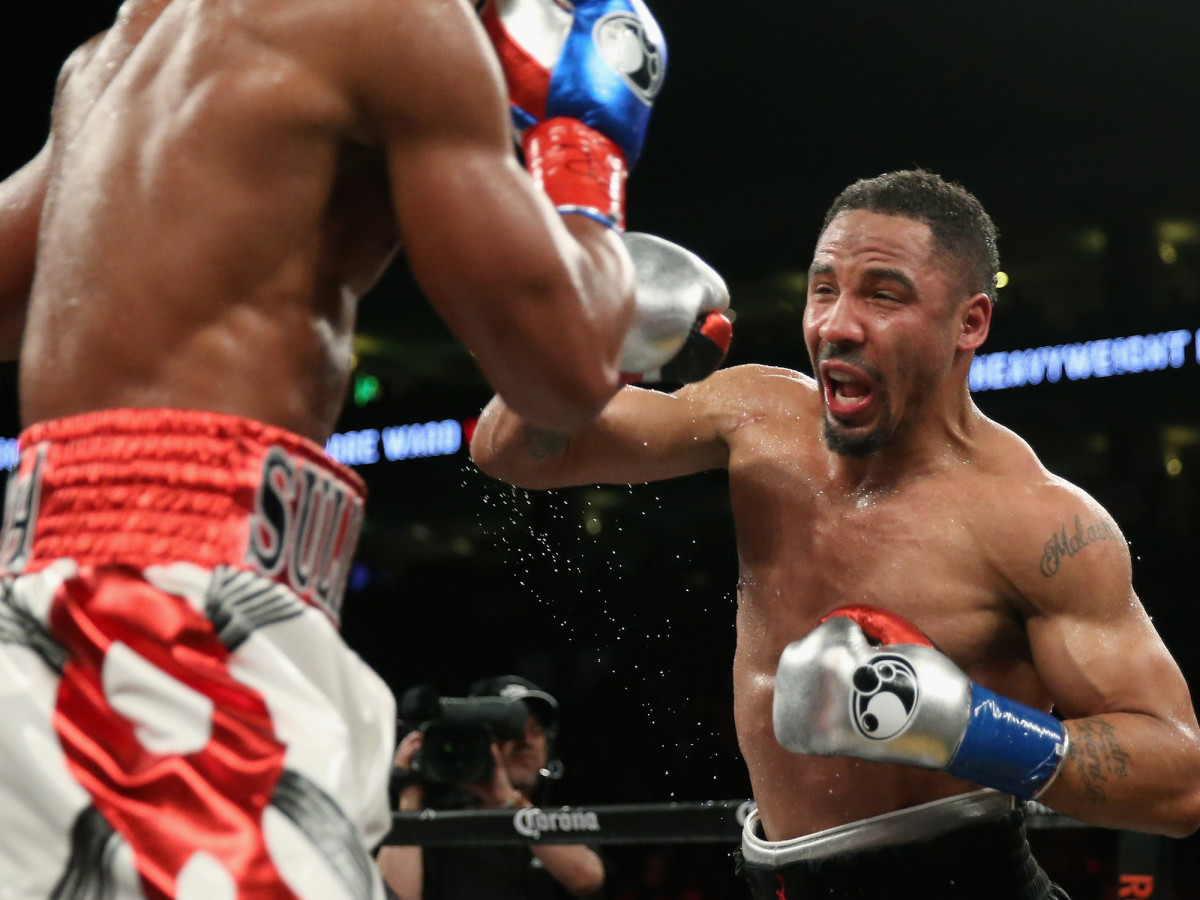Pushing cars and running hills: How boxer Andre Ward prepares for a fight

A wildlife sanctuary. A bonsai garden. Even a children’s fairyland attraction. All just typical parts of boxer Andre Ward’s preparation for a fight. You see, the super middleweight champion uses the trails around Lake Merritt in downtown Oakland as a training ground, trails that take him through a variety of attractions.
“I like to run, to get out and enjoy the day and see the scenery,” Ward says ahead of his Aug. 6 fight with Alexander Brand. “I put in work at the same time.”
Fight prep follows a choreographed routine. A pro for about a dozen years, Ward knows how to best prepare his body, using time between fights to do the heavy weight and strength and conditioning work, allowing his six-to-eight week training camp—which he starts about 10 weeks before a bout—to double-down on conditioning and boxing-specific training.
His pre-camp focus changes from fight to fight. This time around he’s taking a heavy dose of TRX. He may do straight weights, maybe Keiser machine work, which he did this past off-season.
“It is important not to get into a rut,” he says. “The body adjusts. There is no particular reason [I choose one thing over another], it is just something different.” But there are still times, he admits, where he puts a focus on a fix. Maybe he needs to get stronger in the lower body to improve his ability to stay low in a fight, which could lead to some new kettle bell work. Maybe he puts a focus on Pilates, which he has done for a decade, to lengthen the body. Whatever the workout, Ward and his trainer Virgil Hunter—“we are typically on the same page”—plan it all out before training camp. And as camp draws closer he hits the gym up to three times a week to “take the cobwebs off from a boxing standpoint.”
J.J. Watt draws simple, hard-work mentality from his long-time trainer
One workout in the plan that Ward doesn’t much like is track sprints. “It is very painful,” he says. “It is an explosive workout and takes a lot of mental fortitude.” He knows the track workout is a necessity, but he’d much rather hit the hills of Northern California or the trails around Lake Merritt.
As Ward has matured in his training, he hasn’t changed his philosophy, even if, at 32, his body “can only take so much.”

“I’ve always been a tough kid; I’ve always been a max effort kind of kid no matter what I did. You gotta work when you feel like it and you gotta work when you don’t feel like it,” he says. “I have a heavy sparring session 10 minutes from now and I don’t necessarily feel like going to the gym. But those are the days you work your mind and lock in mentally and let that be your best day. My philosophy has been the same, being consistent and banging away.”
That work can include a few Ward-specific bits, too. Ward says he learned about the weighted glove brand Powerhandz organically. “I’m always searching for something that can benefit me individually and I saw the Powerhandz Instagram page, where basketball and football players were using it and I said, ‘man, this could work for boxing,’” Ward said. He messaged the company himself and they sent him the gloves.
While you’d expect Ward to use weighted gloves as part of his boxing warm-up, prepping him for the 18-ounce training glove or 10-ounce competition glove, he also uses the one-pound gloves for extra resistance when lifting or running. “It is an extra challenge to take my game to the next level to build up shoulders, arms and grip,” he says.
Not just the icy blue 'do: Ryan Lochte has new attitude, routine ahead of Rio 2016
Of course, he has them on when shadowboxing, but also when jumping rope or doing speed workouts. “I can’t do that with a dumbbell in my hand,” he says. “I probably use them 40% of the time. If I have a hill day, let me put the Powerhandz on. I’m looking for that edge and something to make my workouts that much more intense. It is the difference between hitting someone and hurting them versus knocking them out. It is the small things people overlook.”
And while Ward doesn’t like giving away all his training tricks, another Ward special is one he’s done since he was a teenager: pushing cars. Hunter puts a car in neutral and in an interval fashion Ward has to push it with everything he can and get some steam going. “There is something about having to push that dead weight,” he says. “You dig in there. It is an overall hit to the body, a shock.”
For a boxer, getting used to shocks to the body—whether pushing cars, running wind sprints with weighted gloves or hitting Oakland’s trails—prepares you for competition, because in competition there are no bonsai gardens to enjoy.
Tim Newcomb covers sports aesthetics—stadiums to sneakers—and training for Sports Illustrated. Follow him on Twitter at @tdnewcomb.
